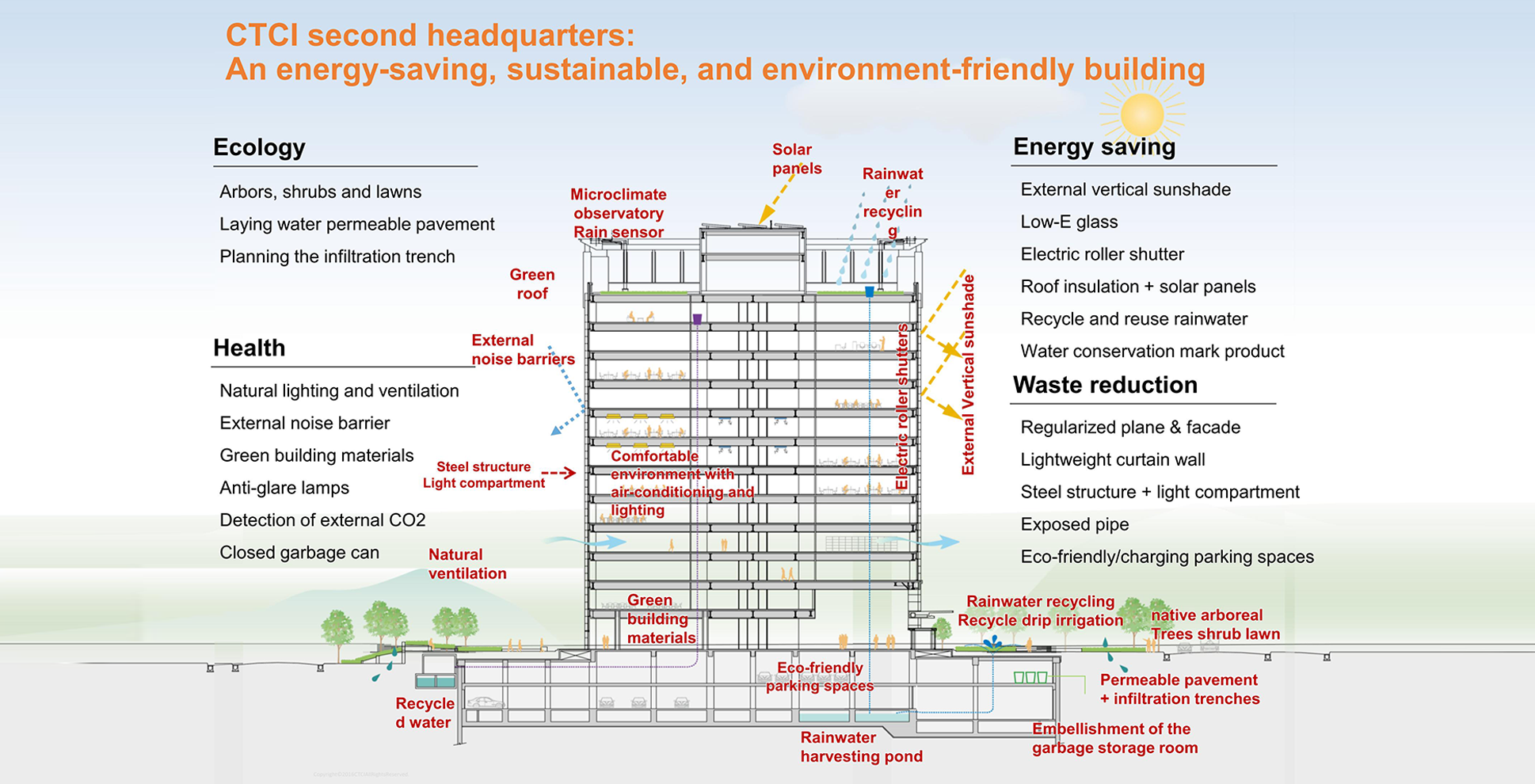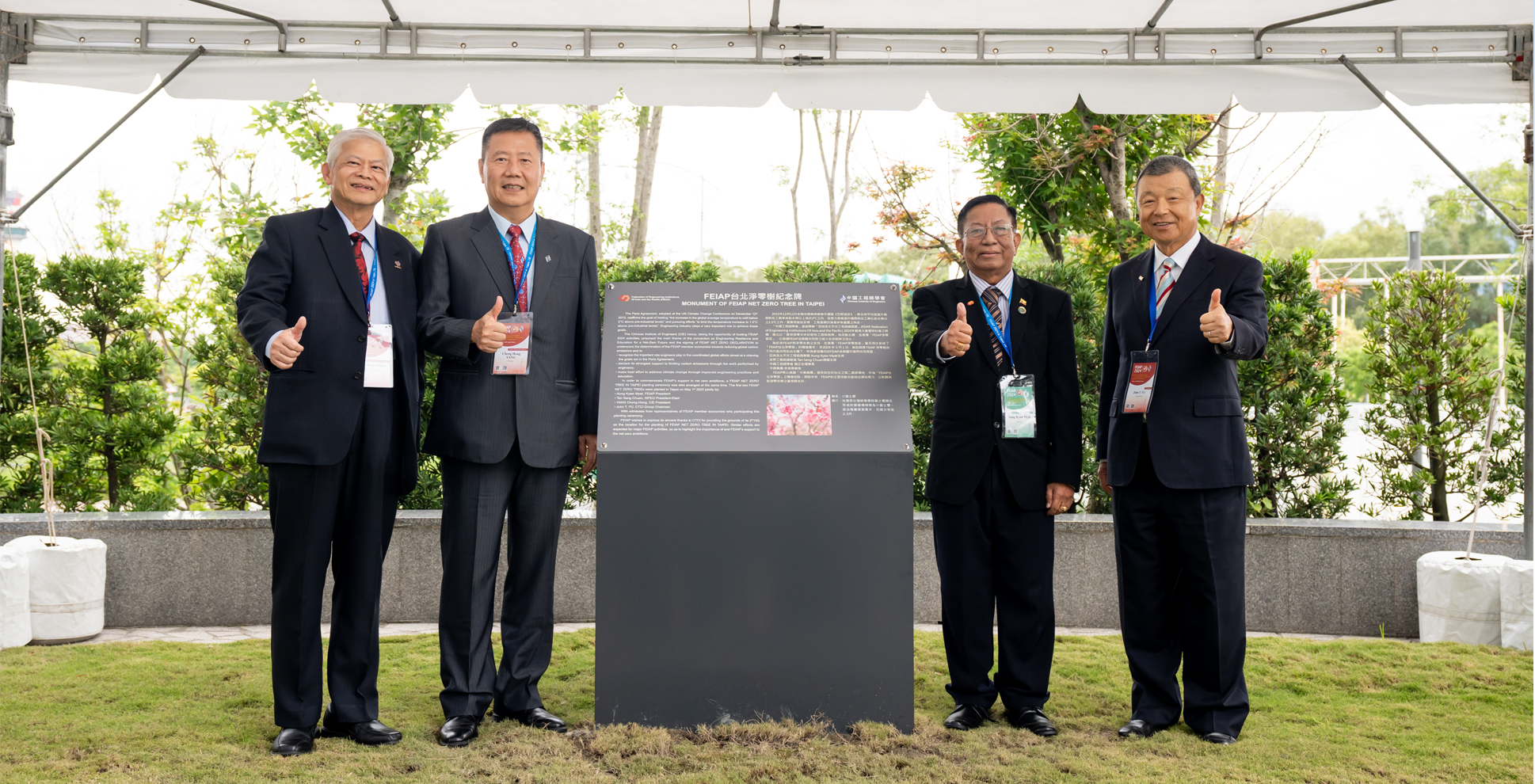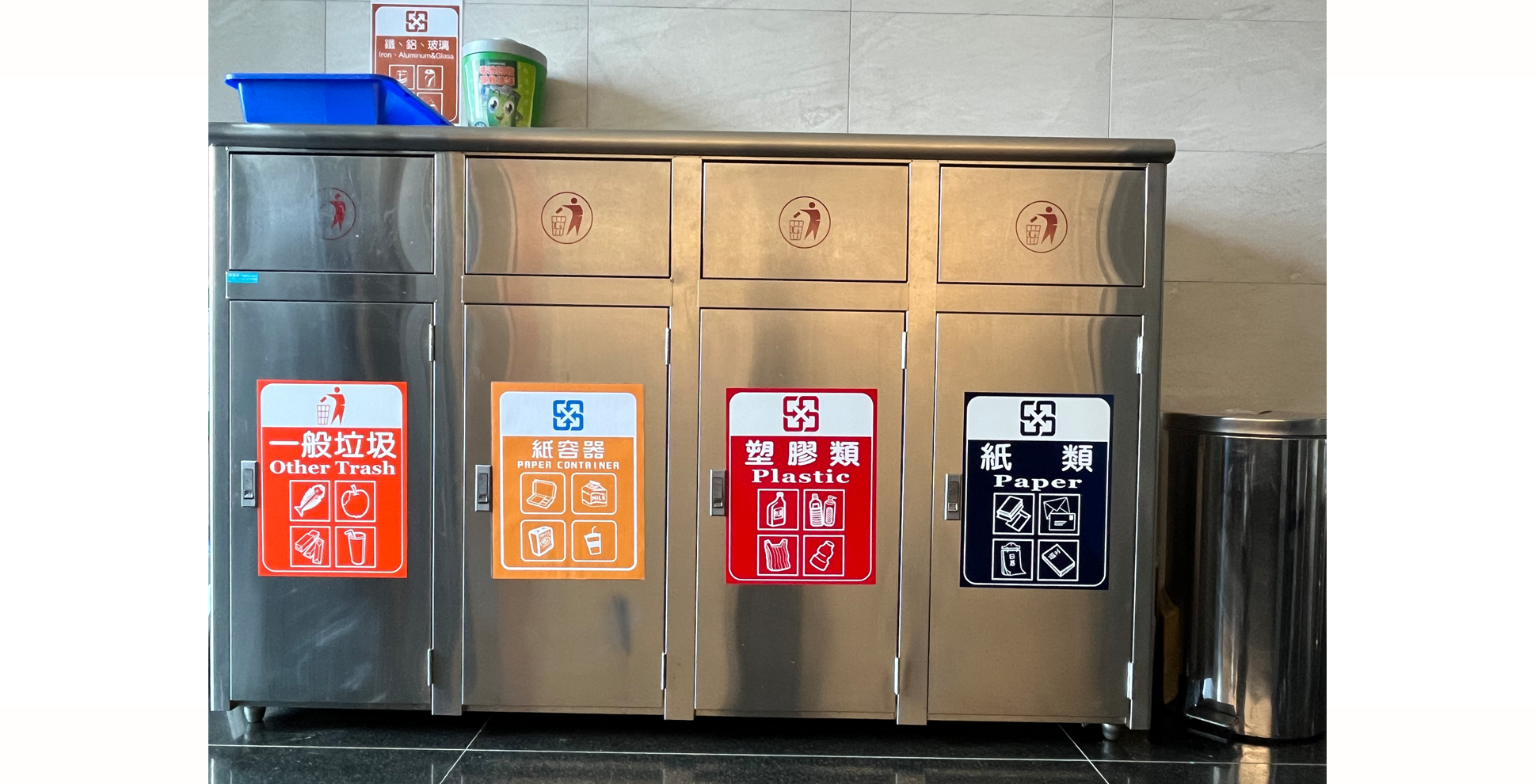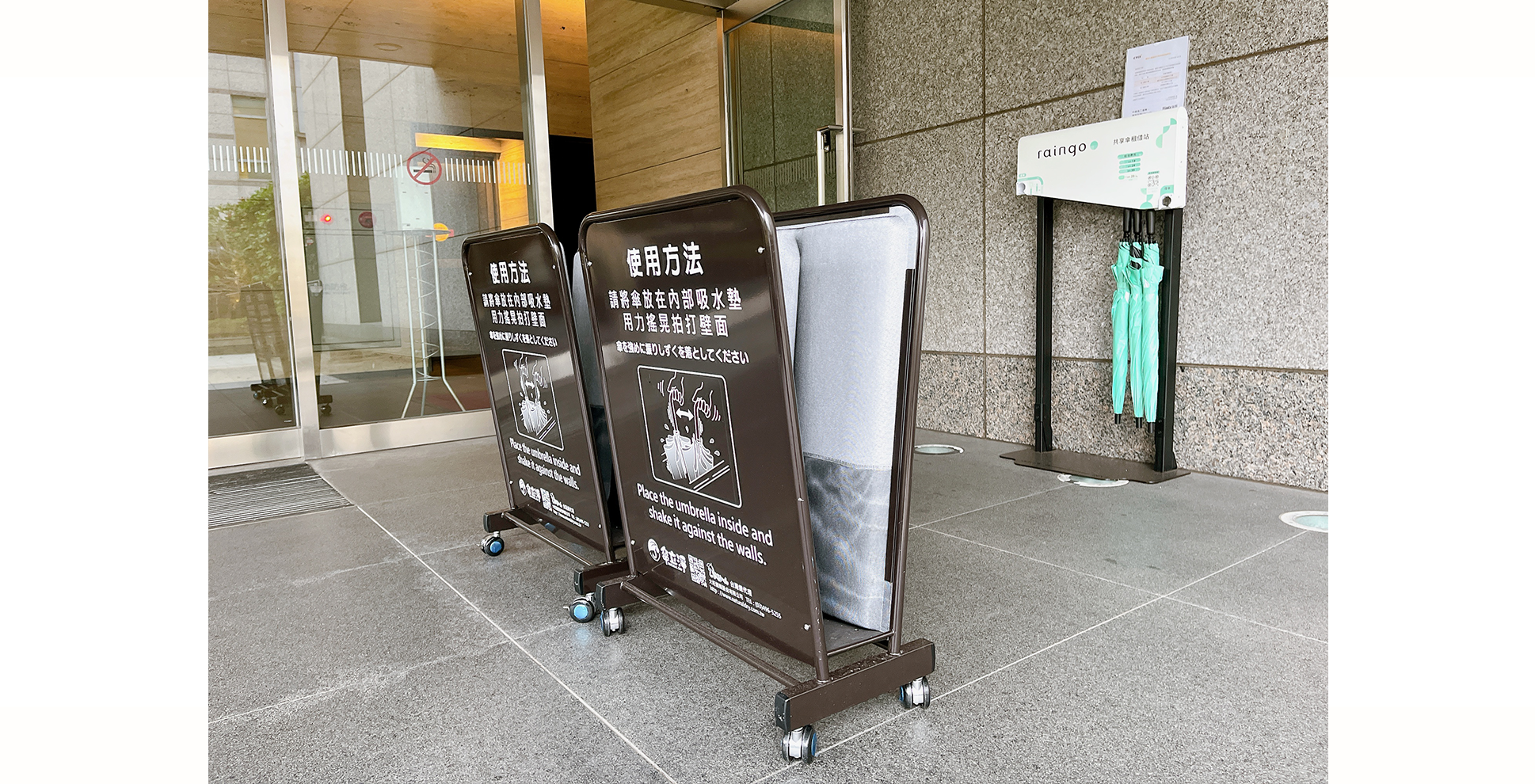Corporate Citizen
企業公民
Keeping the Earth Sustainable in Daily Work through Green Office Practices at CTCI
The concept of "green office" refers to encouraging energy and resource conservation in the office space, including saving water, electricity, paper, and fuel. Specific measures include encouraging reduced paper printing and double-sided printing, replacing physical meetings with video conferences, strengthening waste and resource recycling, promoting environmental greening, implementing green procurement for office supplies, and encouraging employees to make green travels. These initiatives aim to create an eco-friendly office environment, thereby practicing a “greener” life. For years, the Taiwanese government has been promoting energy-saving, carbon-reduction, and green office procurement. At CTCI, we pride ourselves on being a "Guardian of Sustainable Earth." Our sustainability practices are not only implemented in global projects, but are also enrooted in the office environment. The Administration & General Services Department of CTCI has selected 35 out of 100 green office measures as recommended by the Ministry of Environment for implementation, encompassing five key indicators: Saving energy and resources, reduction at the source, green procurement, environmental greening, and promotion and advocacy. CTCI is now officially a "Green Partner."
CTCI Second Headquarters Building: A Model Green Office
As an example of CTCI’s green office effort, CTCI’s energy-efficient Second Headquarters building, located in Beitou Shilin Technology Park, was designed and built by CTCI’s own team, leveraging its green engineering expertise. It has received multiple certifications, including Taiwan’s Intelligent Building Label and Green Building (EEWH) Label—both diamond grade— as well as U.S. LEED Gold, becoming a showcase of intelligent and user-friendly office features.

CTCI second headquarters building: An energy-saving, sustainable, and environment-friendly building.
In this building, employees can have quick access to the underground parking lot with automatic license plate recognition, reducing idle time. The parking lanes feature always-on LED lighting, while sensor-activated lighting in parking spaces ensures energy savings and safety. In the lobby, the bright design, with deep shading and natural light, eliminates the need for lights during the day. During peak hours, the elevator regenerative power system converts deceleration energy into electricity, reducing energy consumption by 30%. Each office floor is equipped with anti-glare LED lighting, with brightness centrally adjusted. This not only meets regulatory standards but also reduces eye fatigue. Automatic ventilation system would be triggered when the carbon dioxide sensors on the walls detect CO2 levels exceeding the threshold. External air is cooled in a pre-cooling air-conditioning unit before being circulated indoors, reducing air conditioning energy consumption. Additionally, the pantry rooms and restrooms benefit from natural lighting during the day, eliminating the need for artificial lighting. The restrooms are equipped with sensor-activated lights, while the water-saving fixtures are certified with a gold-level water efficiency label, saving 60% of water. Toilets use reclaimed water from washbasins, saving 238 tons of water annually. On the rooftop, solar panels generate clean energy. The building’s exterior uses double Low-E laminated insulating glass, with deep recessed balcony and shading blinds on the east side. The windows are equipped with electric awning curtains with low light-transmittance but high visibility, which would automatically adjust based on sunlight levels detected by a solar sensor. This reduces external heat and lowers air conditioning energy consumption. The lighting near the windows would automatically adjust its brightness according to the available light, providing appropriate office lighting. Around the building, various native trees, shrubs and lawns have been planted to protect biodiversity, with a green coverage rate of 89.73%, far exceeding the legal requirement of 60%. The northern garden features two ornamental cherry trees, planted by CTCI Group Chairman John T. Yu and three distinguished guests during the Federation of Engineering Institutions of Asia and the Pacific (FEIAP) 2024 annual meeting's net-zero declaration signing and tree planting ceremony. CTCI group also committed to sustainability during this event. In terms of plant care, soil moisture sensors facilitate irrigation management, and water for irrigation can be supplemented by rainwater collected from the rooftop. Excess rainwater is channeled through permeable pavements and drainage systems to underground storage tanks, bolstering the government's sponge city initiative.

CTCI Group Chairman John T. Yu and three distinguished guests attended the 2024 annual meeting of the Federation of Engineering Institutions of Asia and the Pacific (FEIAP). The net-zero declaration signing and tree planting ceremony was held at the CTCI second headquarters.
Advancing ESG: Internalizing ESG into Employees' Daily Work
CTCI aligns its corporate operations with sustainability goals and internalizes ESG practices into employees' daily work routines and DNA. With an innovative spirit, CTCI continues to implement ESG improvements in green office practices. Below is a summary of the measures adopted by CTCI that are low-carbon, energy-saving, water-saving, and waste-reducing. • As of 2024, solar panels have been installed on the rooftop of the First Headquarters building to generate self-sufficient power. • The opening schedule of electric awning curtains at the First Headquarters building is adjusted based on the building's orientation and sunlight, saving energy on air conditioning. • Office lighting in the Second Headquarters building has been adjusted based on seating arrangements to optimize brightness. • Among overall power consumption within the office building, green electricity consumption grew to 61% in 2024. • Due to efficiency and energy-saving considerations, only one elevator will operate during off-work hours and on holidays. • Lights have been turned off for 30 minutes to save energy during lunch break. • Procured environmentally certified hand soap, as well as reduce soap consumption and water usage. • Company vehicles switched to hybrid or electric models to reduce air pollution, greenhouse gas emissions, and energy consumption. • Umbrella water-removal machines have replaced single-use umbrella covers at building entrances, while shared umbrella stations have been set up in collaboration with a shared umbrella provider. • Company café uses reusable cups, and does not provide disposable paper cups or • Waste recycling includes a new category for paper containers to enhance resource recycling and reuse. Looking ahead, CTCI will continue to make ESG improvement in all aspects and strive to achieve net zero emissions across all of its offices by 2030, thereby fulfilling its ESG vision as a “Guardian of Sustainable Earth.”

The company café offers two types of heat-resistant reusable cups for borrowing.

Waste recycling includes a new category for paper containers.

Umbrella water-removal machines and shared umbrella stations have been set up at building entrances.
Reference Sources: Net Zero Green Living Information Platform CSRone ESG GVM


